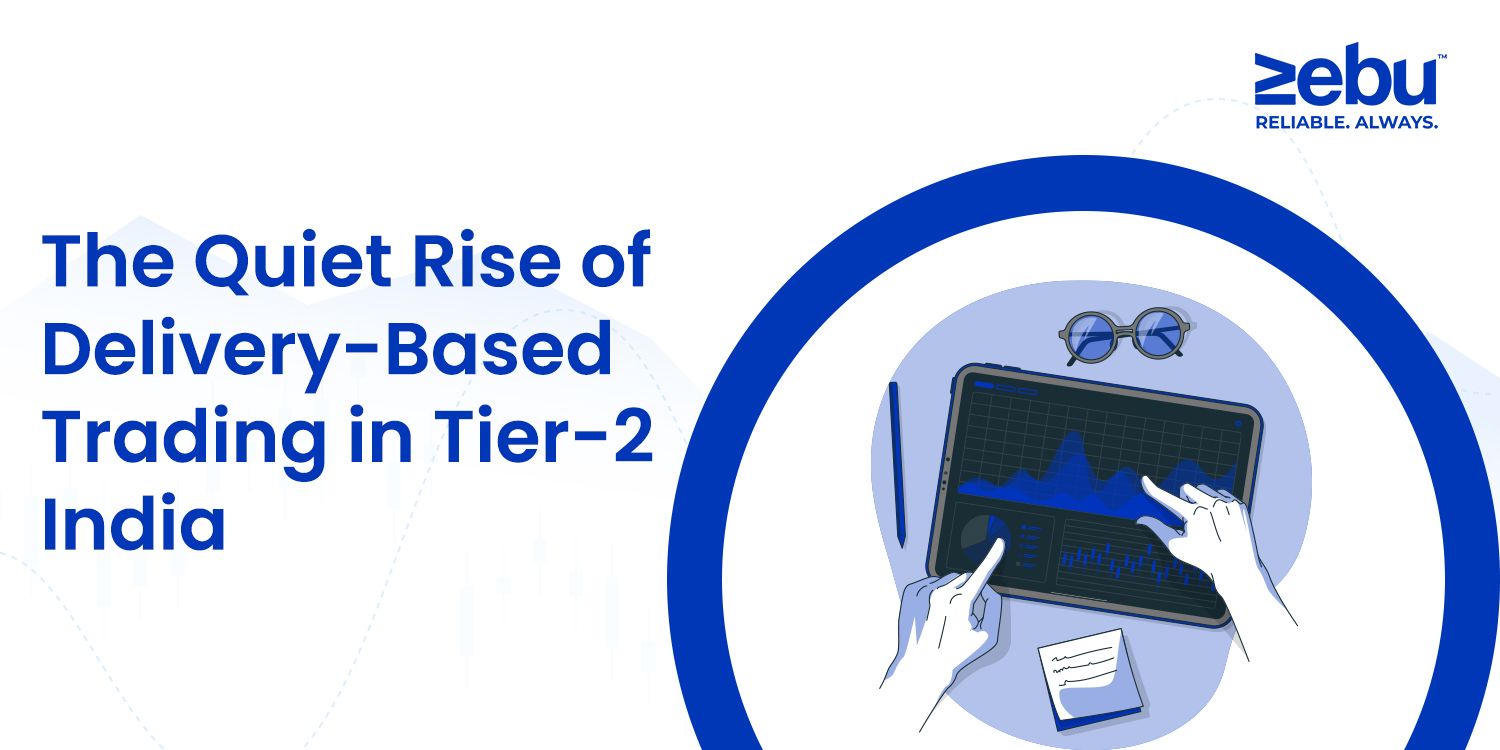
Not every shift in the Indian stock market makes headlines. Some happen quietly, over months and quarters, in app sign-up patterns, transaction logs, and chatroom questions that start sounding different. One such shift—still under-discussed, but quietly building—is the growing preference for delivery-based trading in Tier-2 towns and smaller urban centers.
This isn’t a loud trend. It doesn’t show up in trading volume spikes or social media trading tips. But it’s there, in the way retail investors from cities like Coimbatore, Vadodara, Udaipur, and Mangaluru are choosing to hold stocks longer, skip leverage, and ignore intraday volatility.
If we’re listening closely, this might be a signal worth noting.
What Do We Mean by Delivery-Based Trading?
Before we dive in, let’s clarify terms. Delivery-based trading is when you buy shares and actually take delivery of them into your demat account. You don’t sell them the same day. You don’t rely on borrowed margin. You just… buy, and hold. It could be for a week, a month, a year, or longer.
For many years, delivery trading was associated with institutional investors, high-net-worth individuals, or ultra-cautious participants. But that’s changing—quietly but steadily—in India’s expanding retail investor base.
The Shift: From Buzz to Basics
There was a time—especially during the post-pandemic boom—when many first-time investors from smaller towns gravitated toward F&O segments, lured by lower capital requirements and the thrill of faster returns.
But that phase seems to be tempering. Brokerage platforms like Zebu are seeing an increase in account activity tied to equity delivery—especially from users outside the top six metros. These users aren’t chasing momentum. They’re buying into companies they know, or have heard about from trusted circles. FMCG, manufacturing, railway-linked PSUs, power sector names—these see more interest than small-cap tech.
There’s a change in rhythm here. A willingness to stay, to observe.
Why Tier-2 Investors Are Shifting Gears
The reasons aren’t dramatic. But they’re grounded.
- Experience with Losses in High-Risk Trades:
Many early traders experimented with leverage. Some gained. Many learned the hard way. That learning is pushing a move toward stability. - Access to Better Platforms:
Mobile apps—like Zebu’s—now offer seamless access to delivery trades, portfolio views, and market depth, even on slower connections. - Financial Literacy Is Rising (Just Not on Instagram):
People are learning, but not from influencers alone. They’re learning from bank webinars, community sessions, and even local language investor podcasts.
- Cultural Familiarity with ‘Holding’:
In many smaller cities, the idea of ‘owning and waiting’ is more culturally resonant. Stocks are treated like assets, not opportunities.
Patterns in the Numbers (and the Behavior)
We’re seeing a few common themes in how these investors behave:
- First-time investors placing 3–4 trades a month—not daily
- Average holding periods increasing beyond one week
- Preference for well-known brands or PSU stocks
- More questions about dividend yield than options chain
They’re not here to flip trades. They’re here to understand.
It’s Not Just a Matter of Geography—It’s Identity
This trend isn’t about small towns being slower. It’s about investors choosing control over noise.
When markets get volatile, delivery traders often sit it out. They check prices, but they don’t exit. That kind of behavior shows up in portfolio logs, not volume charts. And it points to a growing maturity—one that isn’t loud, but is lasting.
Platforms Need to Match This Mindset
Delivery investors don’t need ten tools. They need four that work well:
- Clear order types
- Accurate holdings view
- Alerts for dividend/bonus/record dates
- Charts with basic support-resistance levels
That’s why Zebu’s platform is being shaped with simplicity in mind. Because for this segment of investors, clarity beats complexity. They don’t want trading prompts. They want context. They don’t want noise. They want nudges.
Lessons for Brokers and Market Educators
This shift—if nurtured right—could define India’s next decade of equity participation. But it requires a different tone.
- Stop pushing leverage-first tutorials.
- Build visual guides for settlement cycles.
- Explain T+1, not T+1 derivatives margin requirements.
- And make tax statements easy to interpret.
The delivery-based investor is not a less serious investor. They’re just reading the market at a different pace.
What the Road Ahead Looks Like
This isn’t a dramatic pivot. It’s a return to basics.
Owning good businesses. Holding through swings. Skipping the temptation to act every day. That’s delivery trading. And from what we’re seeing, that’s what many Tier-2 investors are quietly leaning into.
The numbers won’t scream it. But the behavior speaks.
Final Word
Markets evolve. And so do market participants. What we’re seeing in Tier-2 India isn’t about avoiding risk—it’s about understanding it better. Zebu is committed to building for this new kind of investor: deliberate, informed, and long-term in their thinking. Not flashy. Just steady.
And maybe, that’s exactly what this market needs right now.
Disclaimer
This blog is intended for general awareness. It is not investment advice or a recommendation to buy or sell securities. Trading and investing involve risk, and past behavior is not indicative of future outcomes. Zebu encourages investors to consult certified financial advisors before making decisions based on individual portfolios.
FAQs
- What is delivery-based trading?
Delivery based trading means buying shares and holding them in your Demat account, rather than selling them the same day.
- Is delivery trading better than intraday trading?
It depends on your goals. Delivery trading is generally safer and suits long-term investors, while intraday trading is faster but riskier.
- How long can I hold shares in delivery trading?
You can hold shares as long as you want—days, months, or even years—to benefit from long-term growth and dividends.
- How to start delivery-based trading as a beginner?
Open a Demat account with a broker, research stocks, and buy shares you plan to hold for the long term.
- Is delivery trading good for long-term investment?
Yes, it’s ideal for long-term investing, letting you ride market trends and earn from both price appreciation and dividends.